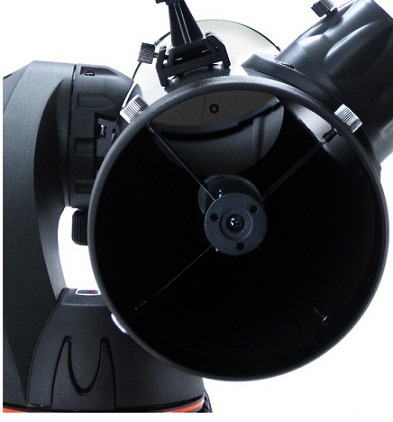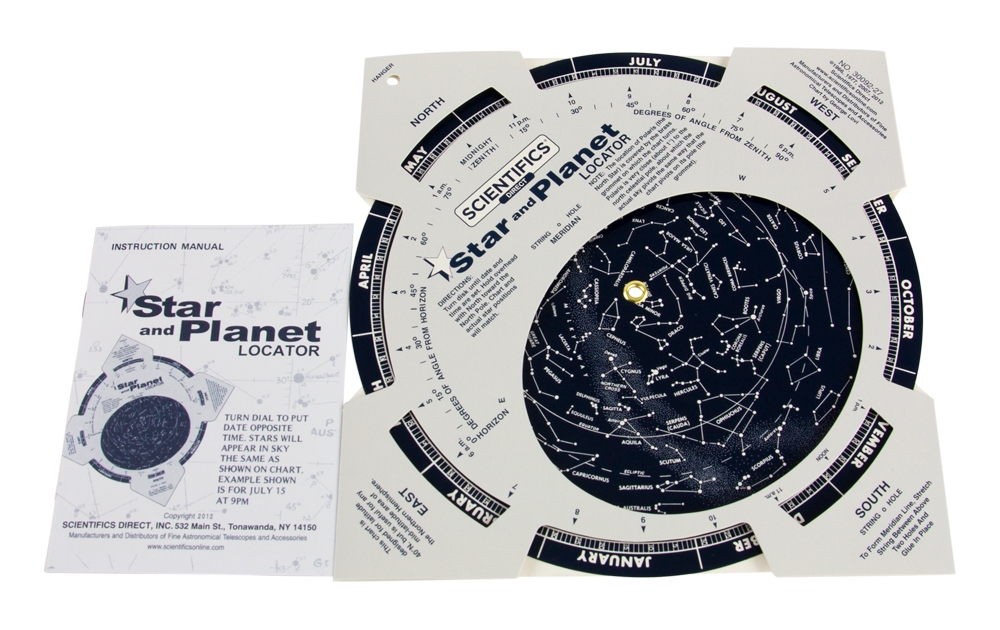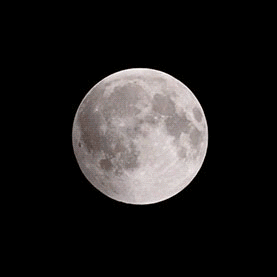 Stores
Stores
Celestron NexStar 130 SLT 5.1"/130mm Reflector Telescope Kit
MFR # 31145Looking for a telescope that can take you on a tour of the Universe and still fit within your budget? The Celestron NexStar130 SLT, or Star Locating Telescope, was designed to do just that. This compact, easy to use, yet powerful telescope system uses the same star locating technology you’ll find in Celestron’s top-of-the-line telescopes.
The NexStar+ hand control features a 40,000-object database of stars, galaxies, nebulae, and star clusters, plus the Moon and planets. Simply select the object you wish to view and NexStar SLT’s high performance servo motors slew directly to the target, center it in the eyepiece, and then track it as it appears to move across the night sky. A computerized tracking telescope such as the NexStar 130 SLT is a great choice for families and groups because everyone can observe the same object without having to make adjustments to keep it in the center of the field of view.

The Celestron NexStar 130 SLT is a great companion on camping trips, too. The telescope breaks down into several lightweight components for transport. Once you arrive at your site, set up the telescope in minutes with no tools required. The telescope runs on eight user-supplied AA batteries, so there’s no need for AC power or an external power supply. Turn the telescope on and you’ll be guided through Celestron’s simple SkyAlign setup procedure. Once you’ve centered any three bright objects in the eyepiece, your NexStar SLT is aligned and ready to explore the cosmos.
With a 5” primary mirror—the largest aperture in the Celestron NexStar SLT family—the 130mm Newtonian reflector offers enough light gathering ability to explore fainter Messier objects, split double stars, and render stunning details on the surface of the Moon. Although they are similar in size and weight, the 130mm model gathers 30 percent more light than the 114mm NexStar SLT for brighter, more detailed views.

Celestron NexStar 130SLT Fast Facts
- High-quality 130mm Newtonian reflector
- Fully computerized altazimuth mount can automatically locate and track thousands of objects
- Includes StarPointer red dot finderscope to help with alignment and accurately locating objects
- "The Sky" astronomy software CD-ROM provides information about the sky and printable sky maps
- Align on any three bright celestial objects with Celestron’s fast and easy SkyAlign procedure
- Flash-upgradable hand control for downloading product updates from Celestron.com
- Internal battery compartment prevents cord wrap during use
- Auxiliary port for additional accessories such as a GPS, StarSense AutoAlign, or SkyQ Link 2 WiFi Module
Newtonian Reflector Advantages
- Lowest cost per inch of aperture compared to refractors and catadioptrics
- Reasonably compact and portable up to focal lengths of 1000mm
- Fast focal ratios are excellent for viewing faint deep sky objects such as remote galaxies, nebulae and star clusters
Newtonian Reflector Disadvantages
- Generally not suited for terrestrial applications
- Slight light loss due to secondary mirror obstruction when compared with refractors

 Plus **FREE**
Plus **FREE**Rotating Road map of the sky
Pinpoint Sky Position Of 500 Stars & 5 Planets
8 1/2" square chart
16 page Booklet included
A must for any stargazer!

Our 8 1/2" square star chart was plotted by the late astronomer and cartographer George Lovi. The reverse side of the locator is packed with additional data on the planets, meteor showers and bright stars.
Included with each star chart is a 16-page, fully-illustrated pocket size instruction booklet. This locator is good now through year 2018!!
Dimensions & Specifications
Aperture
130mm
Eyepiece 1
25mm (26x)
Features
GoTo
Alt-Az Mount
Finderscope
StarPointer
Focal Length
650mm
Focal Ratio
f/5
Good for Astrophotography
Yes
GoTo
Yes
Highest Useful Magnification
300x
Lens Coating
Standard
Mount Design
Computerized GOTO
Object Database
4000 objects
Objective Lens Size Code
130
Optical Design
Reflector
Recommended Usage
Viewing Nebulae
Astrophotography
Viewing Galaxies/Star Clusters
Viewing the Moon
Viewing the Planets
Star Diagonal
1.25 inch
Telescopes Series
Celestron NexStar SLT
Telescopes
User Level
For the Enthusiast
Warranty
2-Year
Limited
YOU ARE BUYING FROM A REPUTABLE SELLER!!
Please add $89.00 for Shipments to: Alaska, Hawaii, Puerto Rico, Guam, US Virgin Islands, American Samoa and US protectorates
Europe Aiming for International 'Moon Village'

COLORADO SPRINGS, Colorado — The European Space agency is pressing forward in its plans to set up a permanent human outpost on the moon.
This envisioned "moon village," a product of international![]() collaboration between spacefaring nations, will be a base for science,
business, mining and even tourism, Johann-Dietrich Wörner, director
general of the European Space Agency (ESA), said here during the 32nd
Space Symposium earlier this month.
collaboration between spacefaring nations, will be a base for science,
business, mining and even tourism, Johann-Dietrich Wörner, director
general of the European Space Agency (ESA), said here during the 32nd
Space Symposium earlier this month.


If you look to the southwest about a half-hour after sunset, Jupiter should pop into view. On June 1, the planet stands halfway to the zenith as darkness falls. It shines at magnitude –2.1 and appears far brighter than the background stars of Leo the Lion. Jupiter sets around 2 a.m. local daylight time in early June and some two hours earlier by month’s end, when the best views come shortly after twilight ends.


